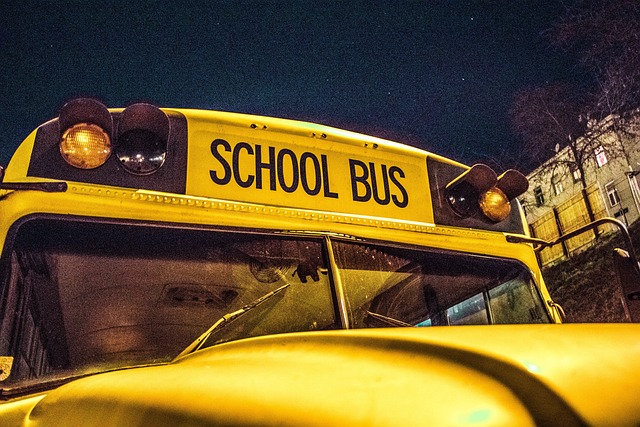Inside This Article
- What are the penalties for failing to stop for a school bus under Michigan’s stop-arm camera law?
- How does a stop-arm camera system work when a bus is displaying alternating flashing red lights?
- When should a driver remain stopped versus when can they legally proceed past a school bus on a divided highway?
Understanding Michigan’s New School Bus Safety and Stop-Arm Camera Laws
Drivers approaching or overtaking a school bus displaying two alternating flashing red lights must stop at least 20 feet away when the bus is stopped.

School Bus Stop-Arm Camera Laws in Michigan
Michigan lawmakers took new steps to increase the safety of children riding school buses. Public Acts 161 and 163 revised portions of the Michigan Vehicle Code and the Pupil Transportation Act to expand driver responsibilities around stopped school buses and authorize the use of “stop-arm cameras” that automatically record video or take sequential photographs of vehicles that fail to stop.
These amendments reflect a growing effort to hold drivers accountable for illegal passes and to better protect children as they enter and exit school buses.
What Are Drivers Required to Do Around School Buses?
Under Michigan law, drivers approaching a school bus must stop at least 20 feet away when the bus is stopped and displaying two alternating flashing red lights. Drivers must remain stopped until the bus begins moving again or the flashing red lights are turned off.
This rule applies to all roads unless the highway is divided by a physical barrier, raised median, or similar structure that prevents cross traffic. On such divided highways, vehicles traveling in the opposite direction of the bus do not have to stop.
Penalties for Violating Michigan’s School Bus Safety Laws
Failing to stop for a signaling school bus is a civil infraction punishable by a fine of $100 to $500, and potentially three points on your driving record. You may also face 100 hours of community service at the judge’s discretion. Disregarding a signaling bus and causing an accident, especially one that results in serious injury or death, is a felony offense carrying a possible prison sentence.
In many cases, officers issue reckless driving charges for drivers who pass a signaling school bus if they believe children are in danger. Reckless driving is a misdemeanor that can result in 90 days in jail.
Hazard Warning Stops Are Not the Same as Red Light Stops
Michigan law also permits “yellow light” or “hazard” stops under specific circumstances. These stops may occur when:
- The speed limit on the road is 50 mph or less
- Children are not required to cross the road
- The bus can safely pull to the far right or off the roadway

During these stops, the bus driver activates hazard warning lights before the stop and leaves them on while students get on or off. Importantly, drivers are not required to stop during a hazard stop.
What Is a School Bus Stop-Arm Camera System?
A “stop-arm camera system” is a series of cameras mounted on a school bus that automatically records vehicles that illegally pass when the red lights are flashing. These systems must:
- Record video or take sequenced photos of violations as they happen
- Capture a clear view of the vehicle’s license plate
- Cover a viewing area at least 200 feet ahead of the bus
- Include the date, time, and location in the recorded footage
This technology allows school districts and law enforcement to better enforce bus safety laws, even when police officers are not present during the violation.
How Do Stop-Arm Camera Violations Work?
When a school bus is equipped with a stop-arm camera and a violation occurs, the recorded video or sequential photos may be reviewed by law enforcement. If law enforcement determines that a violation likely occurred, it has 30 days to initiate a civil infraction by mailing a citation to the vehicle’s registered owner.
This citation must include:
- Photos or video of the incident
- Information on how to view the video online
- The date, time, and location of the violation
- A statement of facts based on the footage
A rebuttable presumption arises from the citation: if the registered vehicle owner is named on the citation and the vehicle is shown violating the law, it is presumed that the owner was the driver at the time. The owner may challenge this presumption in court.
School District and Law Enforcement Agreements
School districts are now authorized to enter into agreements with law enforcement agencies to establish procedures and responsibilities for issuing civil infraction citations based on stop-arm camera evidence. Districts can also work with private vendors to install and operate the camera systems and manage data collected for enforcement purposes.

Why These Changes Matter
Each year, violations of school bus stop laws put children’s lives at risk. By creating a system where violations can be enforced based on clear video or photographic evidence, Michigan aims to deter dangerous driving behavior and improve safety. These amendments allow the law to keep pace with technology while promoting public awareness and accountability.
Frequently Asked Questions
Do I always have to stop when I see a school bus with two red flashing lights? Yes, if the school bus is stopped and displays two flashing red lights, you must stop your vehicle at least 20 feet away from the stopped bus. The only exception is when traveling on the opposite side of a physically divided highway.
Is a violation based on stop-arm camera evidence the same as being pulled over by a police officer? Yes. Under Michigan law, it is treated as a civil infraction, and the citation has the same legal effect.
What if I wasn’t driving my car at the time? You can challenge the presumption in court by providing evidence that someone else was driving your vehicle.
Can I see the video or photo that shows my alleged violation? Yes. If cited, you will receive photographic images or instructions for accessing the video online.
Do stop-arm cameras record all traffic, or only violations? They are triggered to record only when a violation of the flashing red light law occurs.

Why Legal Representation Matters for School Bus Camera Tickets
Hiring a lawyer may seem unnecessary for a civil infraction, but with this new school bus law, the stakes are unusually high. A conviction can lead to costly fines, points on your license, significant community service, and possibly even a criminal record if someone was injured. Prosecutors and judges often view these violations as egregious, and leniency is rare. An experienced, respected defense lawyer understands how to navigate the system, identify legal and procedural issues, and negotiate for a reduced charge or dismissal. Without skilled legal representation, the chances of avoiding harsh penalties are slim.
Call us today at (248) 263-6800 for a free consultation or complete an online Request for Assistance Form. We will contact you promptly and find a way to help you.












